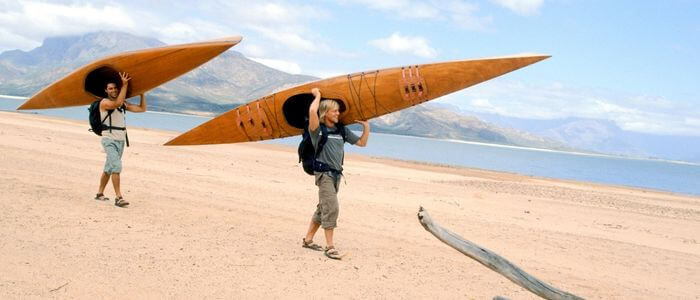
Kayak fishing is a great way to get out on the water and enjoy the outdoors, but it can be difficult to find fish without the right gear. A fish finders for kayak fishing is essential for any kayak fisherman and can help you locate fish even in the deepest waters. In this article, we’ll look at some of the best fish finders on the market and help you choose the right one for your kayak fishing needs.
After reading this article, you will know how to select the best portable fish finders for kayak fishing.
So let’s get started.
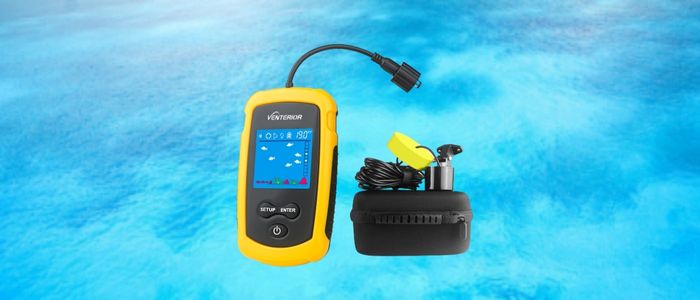
The Venterior Fish Finder is a handheld depth finder that is perfect for kayak fishing or ice fishing. It features a sonar transducer with an LCD, and it comes with a storage case.
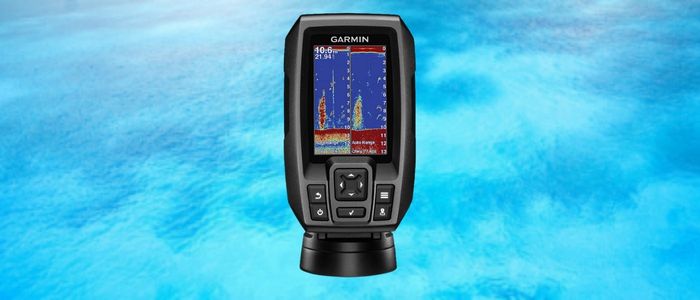
The Garmin Striker 4 is a Fish Finder that uses CHIRP technology to give you a clear view of what is happening below the surface.
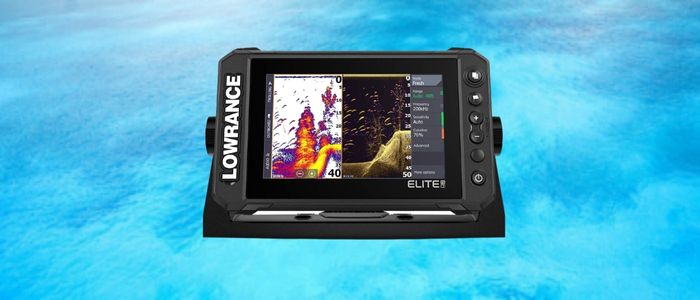
The Lowrance Elite Fish Finder is a top-of-the-line device that can help you find fish in any water. It features Active Imaging 3-in-1 transducer technology, which gives you clear, detailed images of the underwater environment.
Following are some things to consider when choosing the best fish finders for kayak fishing:
If you are new to kayak fishing, you may wonder if you need a fish finder. After all, plenty of kayak fishermen don’t use them. The truth is fish finders can be very helpful, making them essential for people who do fishing as a hobby. If you are just starting kayak fishing, you may not need a fish finder immediately. But as you become more experienced, you’ll likely find that a fish finder can be a valuable tool.
Now you understand that having a fish finder is a great advantage while fishing from a kayak. But there are many different types and models of fish finders available on the market, so how do you choose the right one?
The following factors can help you.
The type of transducer is one of the most important factors to consider when choosing a fish finder. Transducers come in two main types: cone and beam. Cone transducers emit a cone-shaped sound wave, while beam transducers emit a beam-shaped sound wave.
Cone transducers are more common on fish finders, providing a wider coverage area. However, beam transducers are more powerful and can penetrate deeper into the water. So if you are fishing in deep waters, you may want to choose a fish finder with a beam transducer.
And on the other hand, if you are fishing in shallow waters, a fish finder with a cone transducer should be sufficient.
The transducer’s power is measured in watts, determining how deep the sound wave can penetrate the water. The higher the wattage, the deeper the sound wave can go.
You won’t need a high-powered transducer if you are fishing in shallow waters. However, if you are fishing in deep waters, you’ll need a transducer with a higher wattage.
The size of the fish finder’s display is another important factor. Fish finders are available in various display sizes, from small handheld to large console units.
If you are kayaking fishing by yourself, you may want to choose a small handheld unit to easily keep an eye on your line and the fish finder simultaneously. However, if you are fishing with a partner, you may want to choose a larger console unit so that both of you can see the fish finder’s display.
The resolution of the fish finder’s display is another important factor. The resolution is measured in pixels and determines how clear the image on display will be. The higher the resolution, the clearer the image.
If you are looking for a fish finder that can provide you with a clear image of what’s happening beneath the surface of the water, you’ll need to choose a unit with a high resolution. However, if you don’t mind a slightly less clear image, you can save money by choosing a unit with a lower resolution.
Most fish finders on the market today have color displays. However, some units still have monochrome (black and white) displays.
Color displays are generally better than monochrome displays because they can provide more information. For example, a color display can show you the fish and structures beneath the surface of the water.
However, color displays are usually more expensive than monochrome displays. So if you are on a budget, you may want to choose a fish finder with a monochrome display.
The sounder frequency is measured in kilohertz (kHz) and determines how often the sound waves are emitted. The higher the frequency, the more often the sound waves are emitted.
The cone angle is measured in degrees, determining the width of the cone-shaped sound wave. The wider the cone, the more area is covered.
You’ll need a sounder with a high frequency and wide cone angle if fishing in shallow waters. However, fishing in deep waters, you’ll need a sounder with a lower frequency and a narrower cone angle.
Some fish finders come with mapping GPS systems. These systems use the Global Positioning System (GPS) to track your location and create a map of your surroundings.
Mapping GPS systems can be very helpful when fishing in unfamiliar waters. They can help you track where you’ve been and where you haven’t, and they can also help you find your way back to shore if you get lost.
However, mapping GPS systems are usually more expensive than fish finders that don’t have them. So if you are on a budget, you may want to choose a fish finder without a mapping GPS.
Now that you know the basics of choosing the right fish finder for kayak fishing, you can start shopping for the perfect unit for your needs. To help you, the following are some of the best fish finders for kayak fishing that you can consider buying according to your needs and budget.
Following are the eight best fish finders for kayak fishing that you can consider buying:

Size: Approx. 6 Inches
Screen Size: Approx. 2.5 Inches
Weight: Less than 0.5 lbs
Power Type: Battery
Measuring Depth: 328 Feet
The Venterior Fish Finder is a handheld depth finder that is perfect for kayak fishing or ice fishing. It features a sonar transducer with an LCD, and it comes with a storage case.
The Fish Finder has a range of up to 328 feet and can detect fish as small as 2.36 inches. It also has a bottom contour map feature, which makes it easy to find the perfect spot to fish. The Fish Finder is easy to use and comes with an instruction manual. Whether an experienced fisherman or a beginner, the Venterior Fish Finder is the perfect tool for finding fish.
The Venterior Portable Fish Finder is a handheld depth finder that is perfect for kayak fishing or ice fishing. It features a sonar transducer with an LCD, and it comes with a storage case. The Fish Finder has a range of up to 328 feet, and it can detect fish as small as 2.36 inches, making it perfect for all types of kayak fishermen.

Size: 3.6 x 1.6 x 5.9 inches
Screen Size: 3.5 Inches
Weight: 0.5 Pounds
Power Type: Battery
Measuring Depth: 750-1600 ft
The Garmin Striker 4 is a Fish Finder that uses CHIRP technology to give you a clear view of what is happening below the surface. It comes with a 3.5″ display and a transducer that you can use to see fish and track their movements. You can also use the Striker 4 to find your way back to your starting point, as it has GPS capabilities.
Besides, this fish finder uses Chirp technology to send out a pulse of sound waves that can penetrate deep into the water. The Fish Finder then uses these sound waves to create a clear image of the fish and structure below. Plus, with the included transducer, you can start fishing immediately. Whether an experienced angler or starting, the Striker 4 Fish Finder is a great choice for finding fish.
This fish finder is great for anglers of all levels of experience. It uses CHIRP technology to give you a clear view of what is happening below the surface and comes with a transducer so you can get started fishing immediately. So, anyone can have it according to their needs and budget.

Size: 16 x 11.44 x 5.42 inches
Screen Size: 7 Inches
Weight: 9.44 pounds
Power Type: Built-in Battery
Measuring Depth: Approx 1500 ft
The Lowrance Elite Fish Finder is a top-of-the-line device that can help you find fish in any water. It features Active Imaging 3-in-1 transducer technology, which gives you clear, detailed images of the underwater environment. The Fish Finder also comes preloaded with C-MAP Contour+ charts, so you can easily find your way around any lake or river.
In addition, the Fish Finder has a built-in GPS, so you can keep track of your location while you’re on the water.
This unit also has a FishReveal feature that uses high-frequency sonar to identify fish targets and distinguish them from StructureScan imaging. The Fish Finder also includes an LCD color display that makes it easy to view sonar images, even in direct sunlight. Overall, the Lowrance Elite Fish Finder is a great choice for anglers looking for a versatile and feature-packed fish finder.
So overall, it’s an excellent fish finder, but it’s not for everyone as it’s a little expensive. If you are a professional fisherman who wants all the bells and whistles, this is a great choice, but if you are starting, it may be too complex.
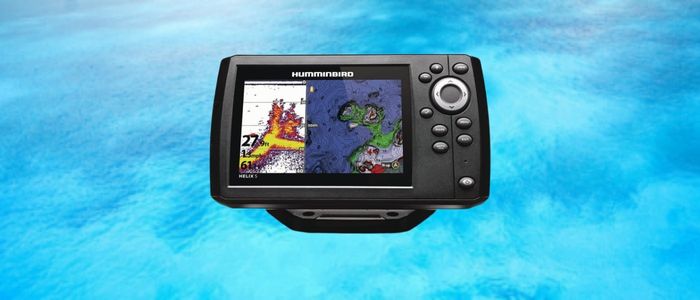
Size: 15.75 x 4.75 x 9.63 inches
Screen Size: 5 Inches
Weight: 3.26 pounds
Power Type: Built-in Battery
Measuring Depth: Approx. 1500 ft
Fish finders are an essential piece of equipment for any angler, and the Humminbird 411660-1 G3 Fish Finder is a great option for anyone in the market for a new fish finder. This fish finder features CHIRP technology, which gives you a more detailed view of fish and structure beneath the surface.
The GPS also allows you to create waypoints and track your progress, so you can easily find your way back to your favorite fishing spots. In addition, the Helix 5 Fish Finder is compatible with Humminbird LakeMaster charts so that you can find Fish attractors, depth contours, and other important information. Whether you’re a seasoned angler or just getting started, the Humminbird 411660-1 Helix 5 Fish Finder is a great option for anyone in the market for a new fish finder.
The Humminbird 411660-1 G3 Fish Finder is great for anglers of all experience levels. It uses CHIRP technology to give you a clear view of what is happening below the surface and comes with a transducer so you can get started fishing immediately. So, anyone can have it according to their needs and budget.
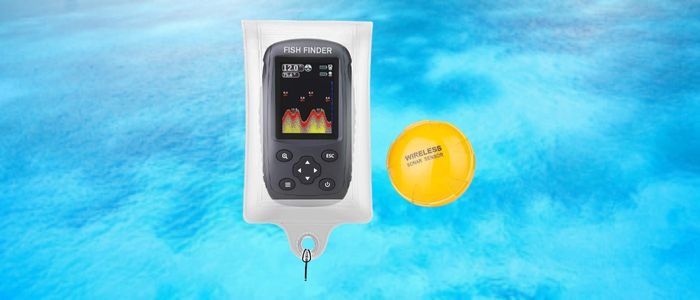
Size: Approx. 6 Inches
Screen Size: Approx. 2.5 Inches
Weight: Less than 0.5 lbs
Power Type: Battery
Measuring Depth: 328 Feet
The Venterior Portable Fish Finder is a great tool for any fisherman. It is a small, handheld device that uses sonar to detect fish in the water. The Fish Finder has a water-resistant case and can be used in fresh and salt water. It also comes with a rechargeable battery, so you don’t have to worry about running out of power while on the lake.
This Fish Finder is easy to use and accurately records the water depth and temperature. It also includes a built-in LED light to see the Fish Finder’s display even in low-light conditions. Overall, the Venterior Portable Fish Finder is a great choice for any fisherman who wants to find more fish.
The Venterior Portable Fish Finder is a great device for any fisherman. It is small and lightweight, making it easy to take with you on your fishing trips. Besides, it has a built-in rechargeable battery, so you don’t need to worry about power. It is also water-resistant and easy to use. The only downside is that the display is quite small, but overall it is a great choice for everyone.
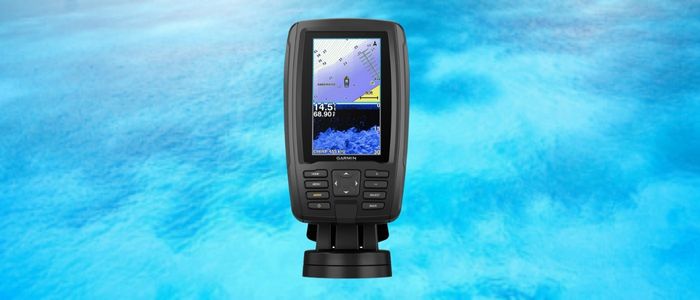
Size: 11.57 x 8.46 x 5.16 inches
Screen Size: 4.3 Inches
Weight: 3.52 pounds
Power Type: Detachable Battery
Measuring Depth: Approx 750 ft
The Garmin ECHOMAP Plus 43cv Fish Finder is a great choice for anglers looking for a reliable and easy-to-use fish finder. The unit includes a 4.3-inch sunlight-readable display, which makes it easy to see your data even in direct sunlight. The GT20 transducer provides clear traditional CHIRP sonar and ClearVü scanning sonar images, making it easy to find and target fish. The unit also comes preloaded with U.S. LakeVü G3 maps, so you can quickly find your way to the best fishing spots.
The clear and traditional chirp sonar makes it easy to find fish in any environment. The 43cv is also very easy to use, making it a great choice for anyone looking for a fish finder combo.
The Garmin ECHOMAP Plus 43cv Fish Finder is a great choice for anglers of all skill levels. It is easy to use and includes various features that make it a valuable tool for anyone who wants to find fish. But the only downside is that it comes with a detachable battery that you will have to buy separately. Nonetheless, it is still a great choice for anyone looking for a fish finder combo.

Size: 13 x 10.3 x 8.5 inches
Screen Size: 7 Inches
Weight: 6.59 pounds
Power Type: Built-in Battery
Measuring Depth: Approx 750 ft
This Fish Finder is designed for serious fishermen who demand the best sonar, mapping, and fish-finding technology. The CV in the model name stands for ClearVu, Garmin’s exclusive scanning sonar that gives you a nearly photographic view beneath your boat. The built-in Fish Finder uses CHIRP technology to send out a continuous sweep of frequencies, giving you a more comprehensive view of what’s below the surface.
The included transducer provides high-frequency ultrasound waves that allow you to see fish as small as 2″ in diameter up to 200′. In addition to the Fish Finder features, the ECHOMAP UHD 74Cv comes preloaded with detailed maps of the United States coastline, making it easy to find your way back to shore. Whether you’re an experienced fisherman or just starting, the Garmin ECHOMAP UHD 74Cv is a great choice for anyone who wants to find fish fast.
Overall, the Garmin ECHOMAP UHD 74Cv is a great choice for anyone who wants the best fish-finding technology. The ClearVu scanning sonar gives you a nearly photographic view of what’s beneath your boat, and the CHIRP technology provides a more comprehensive view of the underwater world. But the biggest downside of this fish finder is its price and battery performance. If you’re willing to pay the price and don’t mind carrying extra batteries, this is the fish finder for you.
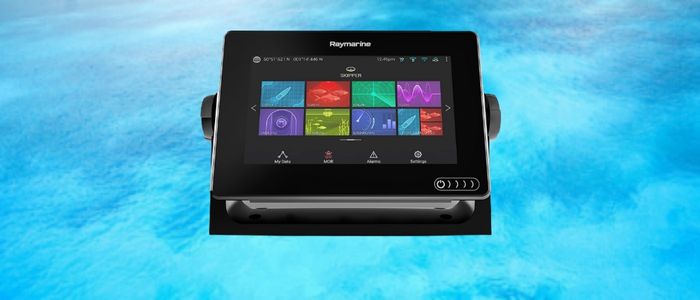
Size: 18 x 13 x 13 inches
Screen Size: 7 Inches
Weight: 8.8 Pounds
Power Type: Built-in Battery
Measuring Depth: Unknown
The Raymarine Axiom 7 Fish Finder is a decent fish finder with features. The most notable feature is the built-in RealVision 3D sonar, which gives you a three-dimensional view of what’s beneath your boat. The included transducer also provides high-frequency ultrasound waves that allow you to see fish as small as 2″ in diameter up to 200′.
In addition to the Fish Finder features, the Raymarine Axiom 7 comes preloaded with detailed maps of the United States coastline, making it easy to find your way back to shore.
The Raymarine Axiom 7 Fish Finder is a good choice for anyone who wants a decent fish finder with some extra features. The built-in GPS and WiFi make it easy to find your way back to shore, and the Navionics and Fish Finder Chart feature is a great tool for anyone who wants to find fish fast. However, the biggest downside of this fish finder is its weight and battery performance. If you don’t mind carrying extra weight, this isn’t a bad deal.
So these were some best fish finders with their pros and cons. Now it’s up to you which one you want to buy according to your necessity. I hope this will help you find the perfect fish finder for kayak fishing.
A fish finder is a device that uses sound waves to locate fish underwater. The device sends a sound wave that bounces off objects in the water, and the returning sound wave is then converted into an image on the fish finder’s display. Fish finders can be used to locate schools of fish and individual fish.
Fish finders are essential for kayak fishermen, as they allow you to locate fish even in the deepest waters. There are various fish finders on the market, and choosing the right one can be difficult. So let’s look at how you can choose the best fish finder for your kayak fishing adventure.
If you haven’t yet got a fishing kayak, check out best beginner fishing kayaks here.
Following are some frequently asked questions related to the best fish finders for kayak fishing:
A kayak transducer should be placed in the kayak’s hull in front of the paddler. This will allow the transducer to see the water in front and beneath the kayak.
A good fish finder can cost anywhere from $200 to $1,000. It all depends on the features and quality you’re looking for.
The best way to mount a transducer on a kayak is to use a Scotty or RAM mount. These mounts allow you to easily and securely attach the transducer to the kayak’s hull.
No, you don’t need a fish finder on your kayak. However, it can be a helpful tool in finding fish. Fish finders use sonar to detect fish beneath the surface of the water. This can help locate schools of fish or individual fish.
A transducer needs to be in the water to work properly. It should be submerged at least 2-3 feet to get an accurate reading.
There are several ways to rig a fish finder on a kayak. The most common way is to use a Scotty or RAM mount to attach the transducer to the kayak hull. Another way is to use a suction cup mount to attach the transducer to the kayak’s deck.
There are several ways to rig a fish finder on a kayak. The most common way is to use a Scotty or RAM mount to attach the transducer to the kayak hull. Another way is to use a suction cup mount to attach the transducer to the kayak’s deck.
So this was all about a fish finder for kayak fishing, and we hope you will find the best fish finder for kayak fishing according to your requirement and budget. Good Luck!

Hey there kayak lovers! I’m Jay Schwartz, the author here at Kayak Guidance! You know water sports – you know me! My life is all about it. Kayaking, Paddleboarding, Fishing, Snorkeling and so much more. I love to share my passion and knowledge with all of you.

Hey there kayak lovers! I’m Jay Schwartz, the author here at Kayak Guidance! You know water sports – you know me! My life is all about it. Kayaking, Paddleboarding, Fishing, Snorkeling and so much more. I love to share my passion and knowledge with all of you.

Welcome to KayakGuidance.com! If you’re looking to have some fun outdoor water adventures, then you have come to the right place. We help our readers find the best kayaks and water related equipment to help you have the best time of your life whenever you are engaging in water activities.
This site is a participant in the Amazon services LLC associates program, an affiliate advertising program designed to provide a means for sites to earn advertising fees by advertising and linking to Amazon.com.